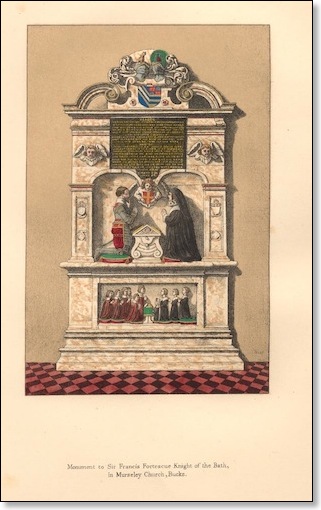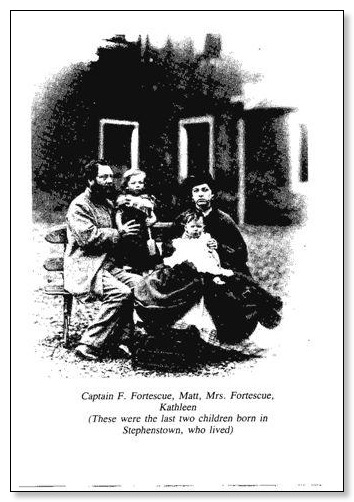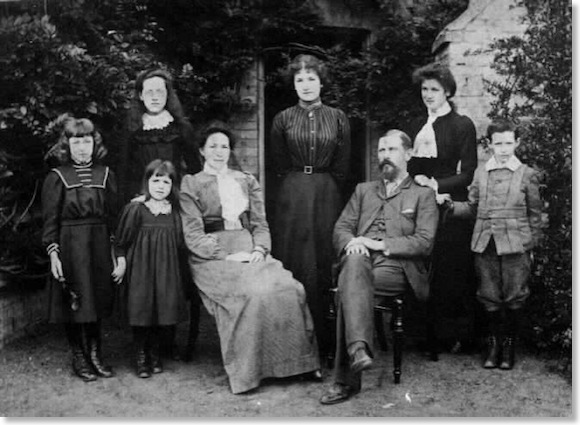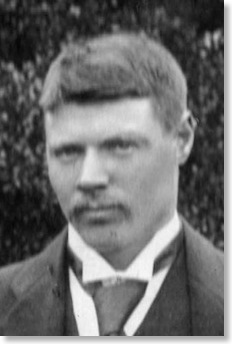Sommaire F
Falmorehall Fortesque (Dog) (Curiosité)
Pedigree for |
Chagrin's Hellraiser|||||
| | Sire Greiner Hall Odin of Chagrin (brindle) | Sire | |||
| | | ||||
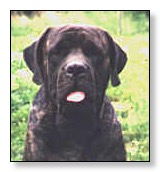
| | ||
| | Pedigree for | Lord Odin of Titan's Knoll|
| | Sire Tyran of Sir Grizzley's (brindle) | Sire |
| | | |
| | Ch. Caledonia's Boaz of Woodwaye (OFA Exc) x King's Desire Bathsheba (OFA Good) | Litter Pedigree|
| |
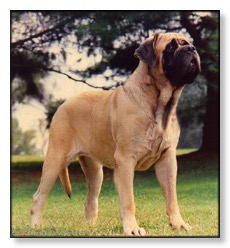
| | | |
| | Parents | Grand Parents |
| | | |
| | Sabrina | |
| |
| | | |
| | Parents | Grand Parents |
| | |
| | ||
| | Greco's Nigel of Northampton | |
| |

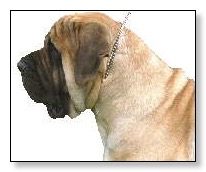
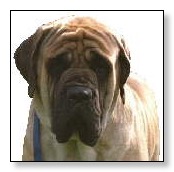
| | | |
| | AKC#: WP553227/09 BORN: 4/15/1994 PROVEN: yes Description: COLOR : fawn WHITE MARKINGS: none MASK : standard, lighter ears COAT : short HEIGHT : 32 WEIGHT : 205 BITE : reverse scissors EYE COLOR : dark BONE SIZE : large TAIL : standard Health Exams: HIPS : OFA MF-2226G24M ELBOW : OFEL MF-EL329 EYES : CERF MF-488/95-17&29 PATELLAS : OFA MF-PA/96-36 THYROID : low-normal vWD : normal vWF: 76% HEART : OFA MF-CA51/34P Temperament: not tested ATTITUDE TOWARD OTHER DOGS : friendly ATTITUDE TOWARD STRANGERS : tentative ATTITUDE TOWARD NEW SITUATIONS : curious Pedigree: -Eng.Ch. Hollesley Medicine Man | -Ch. Falmorehall Fortescue|
| | | |
| | |
Flannery Fortesque Sir

 Shell had its origins in 1833, when Marcus Samuel started a business in a small shop in London's east end, Houndsditch area. He called it The Shell Shop because the most lucrative aspect of his business in antiques, curios and bric-a-brac was sales of the exotic sea shells he imported from the orient and used to adorn the decorative boxes and bowls then popular in Victorian parlors. The trade in shells became so profitable that he arranged for regular shipments from the Far East, which developed into a thriving general import and export business. By the time Samuel died in 1870, the business was enormously successful, and was continued by his sons, Marcus Samuel and Samuel Samuel, who formed the Marcus Samuel Company in London, and the Samuel Samuel Company in Japan. Shell's first foray into the oil industry came in 1878 when Marcus Samuel (the son) began handling consignments of cased kerosene, then the top-selling fuel in the world. Then in 1890, on the way to a buying trip near Batum on the Black Sea, he noticed the harbor at Constantinople (now Istanbul) was jammed with tanker ships loading oil. He realized there was more money in oil than in sea shells, so he ordered construction of eight tankers.
Shell had its origins in 1833, when Marcus Samuel started a business in a small shop in London's east end, Houndsditch area. He called it The Shell Shop because the most lucrative aspect of his business in antiques, curios and bric-a-brac was sales of the exotic sea shells he imported from the orient and used to adorn the decorative boxes and bowls then popular in Victorian parlors. The trade in shells became so profitable that he arranged for regular shipments from the Far East, which developed into a thriving general import and export business. By the time Samuel died in 1870, the business was enormously successful, and was continued by his sons, Marcus Samuel and Samuel Samuel, who formed the Marcus Samuel Company in London, and the Samuel Samuel Company in Japan. Shell's first foray into the oil industry came in 1878 when Marcus Samuel (the son) began handling consignments of cased kerosene, then the top-selling fuel in the world. Then in 1890, on the way to a buying trip near Batum on the Black Sea, he noticed the harbor at Constantinople (now Istanbul) was jammed with tanker ships loading oil. He realized there was more money in oil than in sea shells, so he ordered construction of eight tankers.In order to price his product competitively, he would have to transport it in bulk through the Suez Canal, even though the Suez Canal Company had resisted all previous applications to ship oil. So his new tankers were designed by Sir Fortesque Flannery to satisfy the stringent safety regulations of the canal authority. In 1892 his first tanker,the 5,010-ton Murex, was shipping oil from the Middle East through the Suez Canal. On her maiden voyage she carried 4,000 tons of Russian kerosene from Batum, through the canal en route to Singapore and Bangkok. By this time petroleum was also being produced in the East Indies, and in 1890 a company with the complicated name of NV Koninklijke Nederlandsche Maatschappij tot Explotatie van Petroleum-bronnen in Nederlandsche-Indie had been formed to develop an oilfield in Sumatra. Soon after, the company name was shortened to the Royal Dutch Petroleum Company.
Royal Dutch was using a pipeline for transportation, so in 1896, when Henri Deterding joined the company, it was faced with heavy competition from Marcus Samuel's low bulk transport costs. As a result, Royal Dutch began construction of tankers and bulk storage installations, and set up its own sales organization. Marcus Samuel continued an aggressive competition with Royal Dutch, and by 1897 his oil business had become so extensive that he formed a separate company to operate it, The "Shell" Transport and Trading Company, Limited. He chose the name "Shell" from the new firm's connection with his older business. In 1885, Karl Benz had invented the first practical, gasoline-powered motor car, creating an immense potential market for gasoline. In 1901 oil was discovered in Texas, and Samuel arranged with one of its producers to transport and distribute it internationally. That made Shell Transport the first oil company with worldwide sources of production and supplies of gasoline, kerosene and fuel oil. Meanwhile in the United States, Standard Oil (Ohio) Company, led by John D. Rockefeller, was growing rapidly. Oil had been discovered in Pennsylvania in 1859, and in the oil rush that followed, Rockefeller took advantage of many merger opportunities. By 1900 Standard Oil had become the largest company in the U.S. Standard Oil's fields were located in the U.S., and it began exporting its products to the European and Far Eastern markets in competition with both The "Shell" Transport and Trading Company and the Royal Dutch Petroleum Company.
Standard Oil made several unsuccessful attempts to buy or control Shell Transport, but in the years at the turn of the century both Shell Transport and Royal Dutch experienced production setbacks. Moves towards cooperation between Shell and Royal Dutch had been made intermittently from as early as 1882, but negotiations finally began in earnest, and in 1903 they established the jointly-owned Asiatic Petroleum Company Limited. During the next three years the cooperative venture worked extremely well, with the strengths of each company complementing the weaker areas of the other. In 1907 an agreement was signed uniting the Royal Dutch/Shell Group of Companies. The two parent companies became purely holding companies, with Royal Dutch holding 60 percent ownership and Shell Transport 40 percent ownership - exactly as it stands today. At the announcement of the merger, Sir Marcus Samuel, who had been knighted in 1898, said: "The united companies are on absolutely rock bottom, being their own producers, and producing oil as cheaply as it can be produced in any part of the world, whilst their geographical position gives them an indisputable command of the areas in which they trade. "They are their own carriers, passing the oil through their own installations, and distributing it through their own agencies. I cannot imagine any business, therefore, built upon a surer foundation." In 1908 Royal Dutch/Shell began a geological survey in Oklahoma, much to the consternation of Rockefeller and Standard Oil. By 1915 it had opened its first refinery in the U.S. (Martinez, in California). Royal Dutch/Shell quickly expanded around the world, diversifying into numerous energy-related resource areas.
Today, Royal Dutch/Shell Group of Companies is one of the largest business enterprises in the world. The shell-shaped red and yellow emblem, called "the pecten" after a particular kind of sea shell, is perhaps the best-known corporate symbol in the world.Shell is active in more than 140 countries, with one or more operating companies in each of those countries. Together, the operating companies, of which Shell Canada is one, have more than 140,000 employees worldwide.The Group handles about one-tenth of the oil and natural gas in the world outside the former centrally-planned economies, and has interests in nearly all aspects of the oil and chemical business. It also has substantial investments in coal, metals and forestry. At the heart of these businesses is the principle that Shell companies in each country should be independent, operating as part of the local community. Each is run by people who understand the local environment. They have the authority and autonomy to make all normal business decisions.

Frank Fortescue
N.C. Conference of the United Methodist Church
Deceased Clergy & Spouses
Sept. 1997 - Feb. 1998
Clergy:
FORTESCUE, Frank Wahab (Retired) June 30, 1909 - Nov. 21, 1997. Surviving wife, Delora Williams Holland Fortescue; Children, Frank W., Jr., William Windley, James Massenburg, Elizabeth Ann F. Davis, and 10 grandchildren.
FORTESCUE, Delora Williams Holland (second wife and widow of Frank) died Nov. 30, 1997. Surviving, children, Barbara Holland Bedford, Waverly Holland, Gary Holland, Darryl Holland, and Kenneth Holland.


Francis Alexander Fortescue Major
Arm ring of an African leader. http://www.vam.ac.uk/content/articles/a/arm-ring-of-an-african-leader/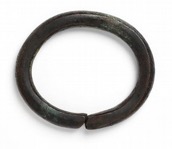
Solid bronze arm ring, about 1850. Museum no. 254-1898
This bronze arm ring was originally amongst the possessions of a southern African leader. A letter pasted into the Victoria and Albert Museum's accession register reveals how it made its way into the collection. The letter reads:
'69 Eaton Terrace / Jan. 18 1898 / Dear Mr Clarke, I am sending by the bearer who brings this a small parcel, containing a bangle, the history of which is that it was taken off the skeleton of Moselekatze (I think that is how the name is spelt) when his grave was opened. Some buttons which were recently exhibited in the Museum of Bulawayo were found at the same time. The bangle contains a certain percentage of gold and I was told resembled the metal used for ornaments by the Phoenicians; of this you will be a better judge than I am. I can vouch for the authenticity of the bangle as it was given me when I was at Bulawayo in [18]96 by the man who opened the grave. I shall be very glad to give it to the Museum, if you consider it worthy. / Yours truly, F.A. Fortescue.'
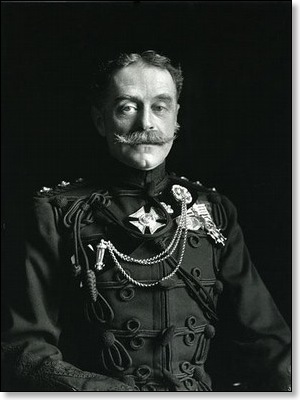
Portrait of Major Francis Alexander Fortescue, 1906,
Lafayette Portrait Studios, © V&A Images / Victoria and Albert Museum, London
Mzilikazi (also spelt Moselekatse) was born in what is now northern Zululand, South Africa, some time in the 1790s. He was the son of Mashobane, chief of a Khumalo subgroup. The period through which Mzilikazi lived witnessed great political and social upheaval in southern Africa. Drought, famine, the rise of military rulers and their kingdoms, and the invasion of European settlers and consequent slave-trading prompted the movement of people around the region on a large scale. Mzilikazi and the Ndebele 1 nation he founded were one of the products of this migratory era.
Mzilikazi's early military career was spent commanding a Khumalo regiment for the famous Zulu ruler Shaka. Around 1820 Mzilikazi rebelled against Shaka's authority and escaped with a few hundred followers. They first trekked across the Vaal River into what is now the northern part of South Africa before continued enemy attacks pushed them south west, to establish themselves on the Transvaal. They moved north again in 1827, to an area above the Magaliesberg mountain range, near modern Pretoria. Here Mzilikazi and his followers founded a settlement called Mhlahlandlela.
In 1838 the group moved northwards again into present-day Zimbabwe where they carved out an area which is now called Matabeleland in the west and south west of the country (Bulawayo is its major city). Here Mzilikazi founded his last settlement, also called Mhlahlandlela. While his journey had begun with a few hundred followers, under Mzilikazi's leadership the group's numbers had risen to, at their peak, some 20,000 people as conquered peoples were absorbed. Mzilikazi's greatest success was infusing his diverse population with a sense of common nationhood, one shared by the Ndebele community today.
Mzilikazi died in 1868 following a period of ill health. According to custom his death was kept secret for a period of time. His body was then placed in a wagon and, with a second wagon loaded with his possessions, taken to a hill named Entumbane in the Matopo Hills. Mzilikazi's body was placed inside a granite-walled cave which was sealed with stones. His possessions, which included clothes; utensils; sleeping mats; beads; ornaments and brass rings such as this arm ring, were placed in another cave with the wagon which had transported them.

William Cornwallis Harris, 'Mzilikazi (Moselekatse),
King of the Matabele' (detail), October 1836, image courtesy of Simon Keynes
During the period of his reign, Mzilikazi had regularly encountered Europeans, including Captain William Cornwallis Harris who made this sketch of him on the right. Mzilikazi tolerated missionary activity within Ndebele territory, largely as he viewed missionaries as a means by which he might gain access to European goods such as guns and horses. However, his relationship with other Europeans was less cordial. One of the reasons for Ndebele movement was violent clashes with the Boers, descendants of the first Dutch settlers at the Cape. Many Boer families had become frustrated with the British administration which ruled the Cape Colony and left in search of new lands. Their searches frequently brought them into conflict with local African rulers like Mzilikazi.
Following Mzilikazi's death, his son Lobengula (ca.1845-ca.1894) assumed power. In 1888 the mining magnate and politician Cecil Rhodes negotiated a land treaty with Lobengula. Known as the Rudd Concession, the treaty permitted British mining and colonisation of Matabele lands between the Limpopo and Zambezi rivers. As part of the agreement, the British agreed to pay Lobengula 100 pounds a month, as well as 1,000 rifles, 10,000 rounds of ammunition, and a riverboat. However it soon became clear that the treaty was part of a British strategy to take control of the region. The British South Africa Company established by Rhodes in 1889 set up its own government and made its own laws, as well as seeking more mineral rights and territorial concessions. The outcome of these colonial activities was the First Matabele War in which some 1,700 soldiers from Lobengula's most battle-hardened regiments were decimated by British firepower. The Company then carved out a territory called Zambezi, and later, Rhodesia, which now covers the area now occupied by the republics of Zambia and Zimbabwe.
In 1896 the Ndebele rebelled again in the Second Matabele War (celebrated in Zimbabwe as the First Chimurenga or War of Independence). It was this conflict which drew Major Francis Alexander Fortescue (1858-1942), the donor of the arm ring, to the area. Fortescue was a professional soldier who served in India, Afghanistan, Egypt and South Africa. He was posted to the latter on at least four occasions; in 1881, 1896, 1899-1900 and 1908-10. As he tells us in his letter, it was in 1896 that he acquired the arm ring. It is unclear why Mzilikazi's grave, which remains within the large granite outcrops of the Matopo Hills, was opened. Today the hills continue to be a place of great spiritual significance to the Ndebele community and were designated a UNESCO World Heritage site in 2003. Fortescue also collected other items made by Zulu-speaking peoples, largely beadwork. These he donated to the Royal Albert Memorial Museum, Exeter, in 1935.
References
1. Mzilikazi and his followers called themselves Zulu yet were known to others as 'Ndebele' or 'Matabele'. 'Ndebele' is an Anglicised form of the Nguni word 'Amandebele', which in turn derives from the Sotho word 'Matabele'. The original meaning of the word 'Matabele' is unclear but it may have been used by Sotho speakers to mean 'strangers from the east'. Other intrusive groups in this period were given the same name by the Sotho.
Further reading
Becker, Peter. Path of Blood: The Rise and Conquests of Mzilikazi, Founder of the Matabele tribe of Southern Africa. London: Longmans, 1962
Kent Rasmmussen, R. Migrant Kingdom: Mzilikazi's Ndebele in South Africa. London: Rex Collings Ltd., 1978
Knight, Ian. Warrior chiefs of Southern Africa: Shaka of the Zulu, Moshoeshoe of the BaSotho, Mzilikazi of the Matabele, Maqoma of the Xhosa. Poole, Dorset: Firebird Books; New York, NY: Distributed in the United States by Sterling Pub. Co., 1994
Flannery Fortescue Sir
Sir Fortescue was a proper squire 
Sir Fortescue Flannery
PUTTING our time travelling ‘helicopter’ down in the grounds of the manor once more – in 1904 – we find a new squire in residence. Sir Fortescue Flannery was a captain of industry and a politician and he filled the role of 'Lord of the Manor' very adequately.
Born in Liverpool in 1851 he studied at the Liverpool School of Science and later founded the Messrs Flannery, Baggallay and Johnson, Ltd, probably the largest consulting engineering firm of its time.
He was knighted in 1899 and created a baronet in 1904. In the General Election of 1895 he became Conservative and Unionist MP for the Shipley Division of Yorkshire. He probably saw Wethersfield Manor as a suitable base from which to contest the Maldon Division, which he won in 1910. Speak to villagers today and he comes over as an autocrat and not too free with his money when it came to maintaining the many tenanted properties on the Manor estate. But he did fight for old age pensions, safety of industrial workers and welfare of the police force during his time in Parliament so perhaps his heart was in the right place.
and she was a real lady
Lady Flannery was a true Lady Bountiful and was loved by all who met her. Sir Fortescue acknowledged a huge debt to her. “Any success I have had in life, whether in business or politics, I attribute mainly to my wife’s support,” he said when receiving a Monteith bowl and silver tray to mark his 25 years’ work for his party in the Maldon division. They were married for 53 years.
In reporting Lady Flannery’s death in 1936 the Essex Weekly News referred to “her sweet sympathy, charitable acts and unfailing courtesy which won her the affectionate regard of everyone. To the poor people of Wethersfield she was ‘ Our gracious lady’. They will miss her visits to their humble dwellings and her Ladyship’s generosity more than can be expressed, but kindness and helping those around her were her nature.” Lady Flannery was passionately fond of flowers and gave quantities away to the sick and people she visited. She supported many women’s organisations and the church and chapel indiscriminately. 
Fyonna Fortesque

| The Indonesian for 'No' … |
It is sometimes easy to overlook the difficulties in communication when you travel to Asia. Besides the obvious differences in language, real meaning and intention are often veiled behind understatement and double-entendre. And I don't mean that in the Benny Hill sense, like "oi, 'as anyone seen me melons?" or "can I carry those jugs for you, waitress?"
...
Undeterred, we sat around drinking cask wine with a contented group of middle-agers which was dominated by Fyonna Fortesque-Smythe or something or other. She was one of those posh English women whose accent was so plum and la-di-da that she had lost the ability to pronounce the letters "r" and "l". I'm sure you know the type. She heard we were going to Ujung Kolong.
"You'd better be carefuw. I hope you've had your tabwets. It weawwy is a dweadful mawahwia awia."
"A what?", we sniggered.
"A mawahwia awia. It weawwy is quite dweadful."
"Sorry?" we chortled.
"A mawahwia awea! It's a bwoody tewwible mawahwia awea!" she cried as we collapsed into howls of laughter.
My mother always told me I should listen to people who know better than me. In the first place, I should have listened to my mother. If I had, I would have listened to Jasper and perhaps even Ffyonna. But I didn't, so I didn't. So we got up early the next morning and began our trek into the dreaded malaria area, unprotected.
...

Florean fortescue's (Curiosité)
Encyclopaedia Potterica
Florean Fortescue's Ice-Cream Parlour - a shop on Diagon Alley
DIAGON ALLEY Harry Potter BAG PURSE! 2 sided w/ SHOPS!
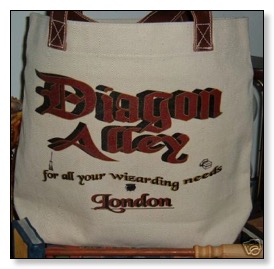

DIAGON ALLEY
"Can we buy all this in London?" Harry wondered aloud.
"If yeh know where to go," said Hagrid.
~Harry Potter and the Sorcerer's Stone
MAKES A UNIQUE AND MAGICAL HOLIDAY GIFT!!!
Back in stock after three months!
This generous size bag, with leather-like handles and bottom, has plenty of room for all your potions ingredients and books! Measures 11 ½” high, not including the handles which add 7”. This adorable bag is 13” across.
(Books and other cool stuff not included. See Ollivander's and Flourish & Blotts if you wish to purchase these items.)
Front reads: Diagon Alley, for all your Wizarding needs, London (Broom, cauldron and books pictured)
Back reads: Flourish and Blotts, Madam Malkin’s Robes, Florean Fortescue’s, Magical Menagerie, Quality Quidditch Supplies, Eeylop’s Owl Emporium, Ollivander’s Wands.

Fish (Curiosité)
Species Summary for
Centropogon AustralisFortescue![]()
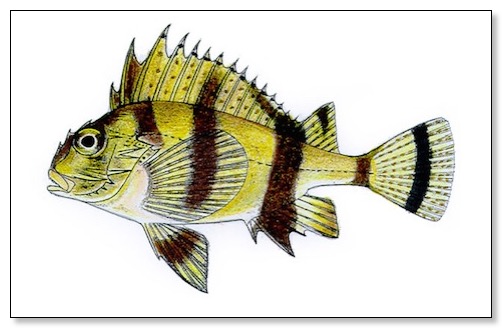
pencil-color illustration based on actual specimen.
by Yau, Bernard - 28.07.2000 
Locality: Gretas Reef
Date: 2006-12-20
http://fishbase.org/Photos/PicturesSummary.php?ID=6384&what=species
Australian Museum![]()
Fortescue, Centropogon australis (White, 1790) - Australian Museum
ANIMAL SPECIES:
Fortescue, Centropogon australis (White, 1790)
The Fortescue has a brown to white body with dark brown to black bars. It has two large spines on either side of the head that can be projected sideways when the fish is disturbed. The first dorsal fin has 16 strong spines that are capable of inflicting a very painful sting.
Standard Common Name
Fortescue
Identification
The Fortescue has a brown to white body with dark brown to black bars. It has two large spines on either side of the head that can be projected sideways when the fish is disturbed.
Size range
The species grows to 14 cm in length.
Similar Species
The Fortescue looks similar to the Soldier. Click on the link to the Soldier fact sheet on the right to find out how to tell them apart.
Distribution
The Fortescue is endemic to Australia. It occurs in temperate marine waters from southern Queensland to eastern Victoria.
The map below shows the Australian distribution of the species based on public sightings and specimens in Australian Museums. Source: Atlas of Living Australia.

Distribution by collection data
Ozcam map of Fortescue specimens in the Australian Museums.
WHAT DOES THIS MEAN?
Habitat
It lives in estuaries and bays to a depth of 30 m.
Other behaviours and adaptations
Divers often see Fortescues, sometimes in large numbers, resting motionless on the bottom.
Danger to humans and first aid
The16 strong dorsal fin spines are capable of inflicting a very painful sting. The pain of the sting can be eased by immersion in hot (not scalding!) water.
Classification
Species: australis
Genus: Centropogon
Family: Tetrarogidae
Order: Scorpaeniformes
Class: Actinopterygii
Subphylum: Vertebrata
Phylum: Chordata
Kingdom: Animalia
WHAT DOES THIS MEAN?
References
- Edgar, G.J. 1997. Australian Marine Life: the plants and animals of temperate waters. Reed Books. Pp. 544.
- Hoese, D.F., Bray, D.J., Paxton, J.R. & G.R. Allen. 2006. Fishes. In Beesley, P.L. & A. Wells. (eds) Zoological Catalogue of Australia. Volume 35. ABRS & CSIRO Publishing: Australia. parts 1-3, pages 1-2178.
- Hutchins, B. & R. Swainston. 1986. Sea Fishes of Southern Australia. Complete Field Guide for Anglers and Divers. Swainston Publishing. Pp. 180.
- Kuiter, R.H. 1996. Guide to Sea Fishes of Australia. New Holland. Pp. 433.
- Kuiter, R.H. 2000. Coastal Fishes of South-eastern Australia. Gary Allen. Pp. 437.
- Poss, S.G. in Gomon, M.F., Glover, C.J.M. & R.H. Kuiter (Eds). 1994. The Fishes of Australia's South Coast. State Print, Adelaide. Pp. 992.
- Underhill, D. 2010. Australia's Dangerous Creatures. Reader's Digest. Pp. 368.

A Fortescue at Shiprock, Port Hacking - Australian Museum
Photographer: Erik Schlögl © Erik Schlögl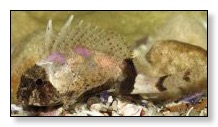
Fortescue, Centropogon australis View full size
Photographer: Aaron Payne © Aaron Payne
ww.amownline.net.au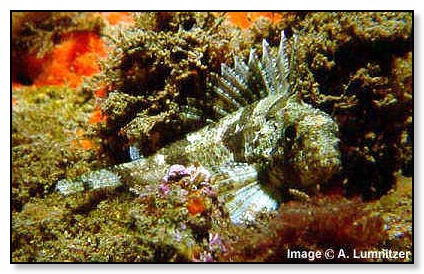
A Fortescue at a depth of 6m, La Perouse, Sydney, New South Wales, December, 1998.
Copyright © 1998 - 2005, australian museum online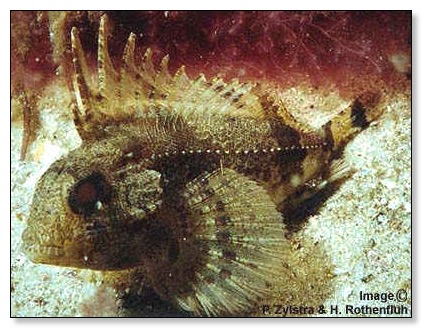
A Fortescue at a depth of 5m, Fly Point, Nelson Bay, New South Wales.
Copyright © 1998 - 2005, australian museum online
| A Taxonomic Summary of Australian Freshwater Fish |

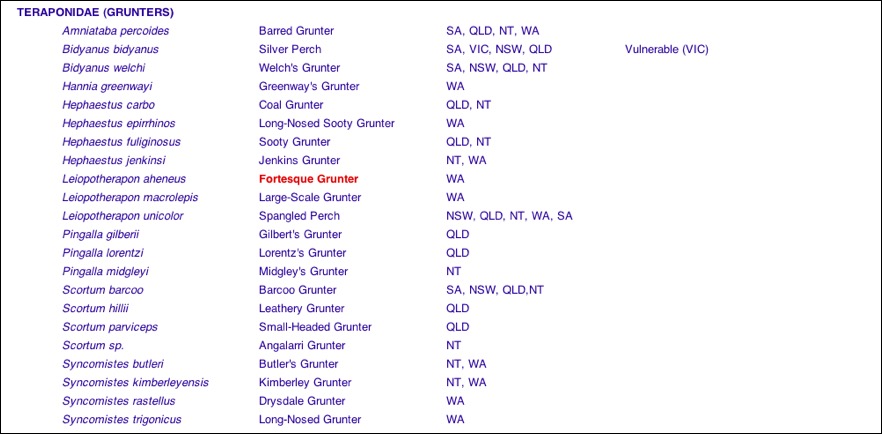
TOM BYRON PUBLISHERS PTY LTD
Australian Scuba Diving Guide Books

Camp Cove: Camp Cove dive site is situated north of the beach along the shoreline to Lady Jane Beach. It's a popular site for scuba diving schools and beginners. The best time to dive this location is on a high tide, diver stands a good chance of having reasonably clear water. Enter the dive site alongside the old wharf and swim in a northerly direction (to your right hand side) along the reef edge toward Lady Jane Beach. Along the way you will encounter many interesting sea creatures-baby sea horses, numerous mados, small bream and snapper, some blue groper, fortesques and weedy sea dragons, plus numerous other macro creatures. Stay close to shore and do not surface too far out into the harbour because sail and motor boats pass close to shore.
(www.netspace.net.au)
Red Rockcod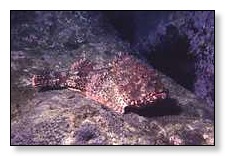
Beautiful and dangerous. Red Rockcod are a member of the scorpionfish family which includes a number of species including Stonefish and Fortesques. Members of this family have poisonous spines that can inflict considerable pain and distress to the victim. If a limb is affected the limb should be immersed in warm water to sooth the pain while medical help is sought (seek confirmation that this is the currently accepted treatment before applying). On a recent dive I found a Rockcod with a fishing hook lodged in it's mouth and some 10-15 metres of fishing line still attached. I was able to cut the line but the hook was imbedded to deep to remove. Barbless hooks are available which may help prevent this problem. It is not unusual to find fish in this state and on another dive I found a large Black Ray with thick rope tied through it's gills. Apparently fishermen put rope through the gills to make it easier to throw the rays overboard when caught in nets, the responsible fishermen loop the rope so it comes loose. I now carry sheers to cut line or rope (caution many rays have tail spines which may inflict severe injury and should be treated with care).
Notesthes robusta
Family Scorpaenidae
Joan O'Connor
Introduction
The Bullrout (Notesthes robusta) is a member of the family Scorpaenidae and is found in estuaries along the eastern seaboard of Australia (Cameron and Endean 1966). This species causes severe and debilitating pain through the secretion of venom from twin venom glands associated with spines in the dorsal, ventral and anal fins (Grant 1978). Envenomation takes place when the spines puncture flesh, when the fish is stepped on, or when anglers attempt to disengage it from nets or lines. The resultant pain is described as intense and recommended treatments include the application of heat, administration of local anesthetics and analgesics with some of the victims requiring complete sedation in hospital (Sutherland 1983). Current literature is mainly descriptive of the fish and the painful effects of envenomation. Little, if any biochemical assessment has been carried out, consequently venom constituents are poorly understood at this time.
The family Scorpaenidae includes some of the most dangerous fish known (Kizer et al. 1985) and they are described by (Edmonds 1989) as resembling the perch and likened by (Keegan and Macfarlane 1963) to the Sea Bass. They have a characteristically large armoured head with sharp venomous spines on the fins. The number of spines in the fin areas vary from 11-17 and these become erect when the fish is aroused or threatened (Edmonds 1984). These fish vary in both form and colouration taking on the predominant colours of their environment. This means Scorpaenidae in tropical waters display brilliant reds, blues and yellows, such as the Butterfly cod - and those fish who inhabit rivers and estuaries such as N. Robusta display drab dark colours (Frey 1994). Known species include : Stonefish, Fortesque, Lionfish, Firefish, and the Rock Cod.
Eastern Fortescue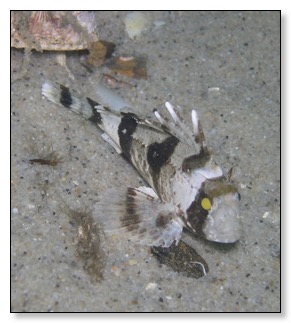
(http://www.underwater-photography.info)
Marine Envenomations
...There are lots of venomous creatures in Australia. This is intended to be a quick reference to the management of lifethreatening envenomations from these creatures...
Venom Actions
Locally acting toxins
Marine venoms commonly cause severe pain (stonefish, ray and fortescue in particular), and, if severe, ischaemia, cyanosis and necrosis.
Venomous Fish Stings and Stingray Spine Injuries
Resources for this page include "Dangerous Marine Animals of the Indo-Pacific Region" (Carl Edmonds, Wedneil Publications, 1978) and more recently "Venomous and Poisonous Marine Animals" (Williamson, Fenner & Burnett, UNSW Press, 1996), and numerous articles from the Medical Journal of Australia.
Non-tropical venomous fish in Australia inlcude catfish, stingrays and the fortescue.
(unimelb.edu)
Flying machine (Curiosité)
1926 JOHN FORTESCUE Flying Machine Patent Print![]()

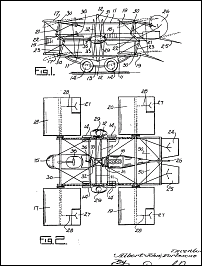
This print is a quality reproduction of the original filed patent artwork titled above. The displayed image above is a low-resolution graphic optimized for quick web display. The actual print you receive will be a detailed high-resolution print free of any defects or watermarks.
The artwork is printed in black on archival quality acid-free 8 1/2" x 11" simulated parchment stock replicating the authentic look and feel of the original patent. The actual artwork image size varies according to the original document but your print can be readily cropped to fit an 8" x 10" display frame.
This prestigious museum quality print is perfect for framing or mounting as you wish in any home or office as decorative wall art. Keep for yourself or great for gift giving to the avid collector. Great conversational piece!
Also included at no extra-charge are the remaining patent text and drawing pages (when applicable) describing this invention in detail. Most patents include a copy of the inventor's original signature (or signed by their patent attorney) on the artwork. Fascinating reading! These are not construction plans or blueprints. This print is perfect for the collector who wants historical background on the above item. Some of the text may be hard to read but the illustrations are enhanced to meet or exceed the originally submitted patent artwork design and at the same time maintaining an authentic look from that era.
![]()

Francis Urquhart Fortescue



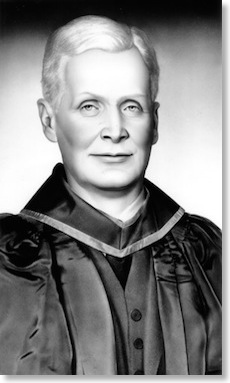 .
. 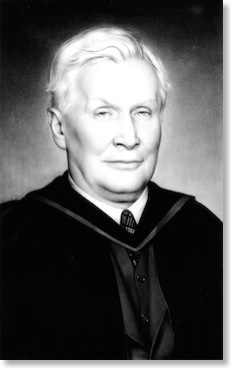
. 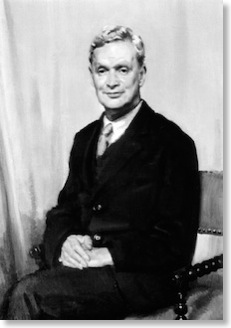 .
. 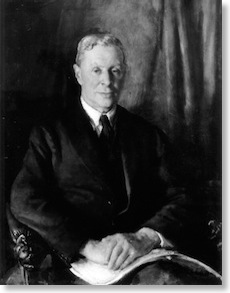

Balliol College Archives & Manuscripts
Photographs of Francis Fortescue Urquhart
This is the first of the web exhibitions not to have started as a Document of the Week, although it did have a precursor in the Kimono Tea Party article. Francis Fortescue Urquhart (1868 – 1934), son of David Urquhart and his wife Harriet Angelina Fortescue, was an exhibitioner at Balliol College 1890 - 1894 and a Fellow of the college 1896 - 1934. He was the first Roman Catholic Fellow in Oxford since the Reformation.
Until 1854, it was necessary to subscribe to the Thirty-nine Articles of Religion (i.e., to declare one's acceptance of the doctrines of the Church of England) in order to take an Oxford degree. After this bar was removed, Rome distrusted the Oxford Movement atmosphere sufficiently to issue a decree in 1867 forbidding Catholics to attend the University. This was not relaxed until 1895. However, some Catholics did come to Oxford despite the ban, including Urquhart. He remained at Stonyhurst College for an external London degree in Classics, and came up to Balliol in 1890 for a second BA in modern history. St Benet's Hall provides a brief summary of this period in the history of Catholic education at Oxford.
Urquhart lived in Balliol for nearly forty years, holding office as junior dean (1896–1907), domestic bursar (1907–19), and dean (1918–34). A conscientious but uninspiring tutor, his interests were more in art and architecture than literature or history, and he made no contributions of his own to historical scholarship. He took little part in university affairs except the development of the Oxford Catholic chaplaincy—he was instrumental in the appointment of his friend R. A. Knox as chaplain in 1926. Nevertheless, he became one of the best-known and most warmly remembered dons of his time. His main role, recalled L. E. Jones, ‘was social, not pedagogic … he appeared to have endless leisure for loitering in the Quad by day and gossiping in his rooms by night’ (Jones, 33). Late in the evening during term time his rooms above Balliol's back gate became an informal salon for undergraduates of all sorts to mix and talk. In vacations he often took a chosen few with him touring, and every summer except 1915–18 he invited groups of a dozen or so to stay with him at his father's chalet, which became known as the Chalet des Anglais. He had first taken a reading party there in 1891; in 1896 he bought the chalet from his elder brother, David Urquhart (1855–1928). It burnt down in 1906 while he was on a trip round the world, but he had it rebuilt. Between 1891 and 1931, when his health failed, he had about 300 chalet guests for a week or two of morning reading and afternoon mountain walks. About half were Balliol undergraduates, but other colleges were also well represented.
Urquhart had a slim, athletic frame, blue eyes, and a handsome, smooth face with heavy, slightly pouting lips; his hair was thick and curly—light brown in youth, white later. The nickname Sligger, by which he was generally known after about 1892, was derived from ‘sleek one’ through ‘slicker’. He liked handsome young men, and photographing them, but was probably celibate. Only one special relationship is evident, with Stephen Hewett (1893–1916), whose letters from the trenches he edited for publication. Walter Pater may have used Urquhart as the model for some features of the subject in Emerald Uthwart (1892). Anthony Powell, a pupil of Urquhart's, placed his recurrent character Sillery in a setting based on Urquhart's salon, but denied otherwise drawing on him.
Urquhart died of lung disease in Oxford on 18 September 1934 and is buried in Wolvercote cemetery. He left the Chalet des Anglais to his Balliol friend R. A. B. Mynors, who in turn bequeathed it to a trust. It is still used for undergraduate reading parties from Balliol, New and University Colleges.
FFU's entry in the Oxford Dictionary of National Biography, written by Dr John Jones, is available online by subscription. His father David Urquhart is also in the ODNB and his uncle Chichester Samuel Parkinson-Fortescue, Baron Carlingford and second Baron Clermont.
http://archives.balliol.ox.ac.uk/Exhibitions/exhib09f.asp
CH1.2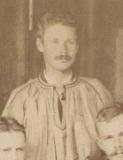
CH1.7
CH1.34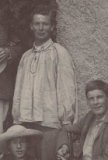
CH1.41
FFU7.59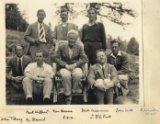
CH2.70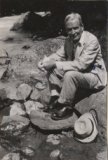
CH2.84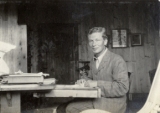
FFU 6.40, 1912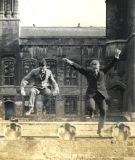
FFU 6.54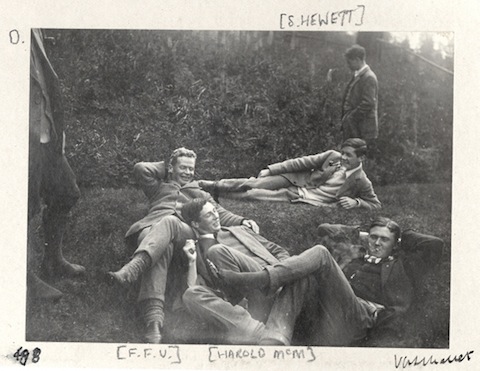
FFU with Harold Macmillan, at the Chalet, July 1913 (FFU 6.55, 57)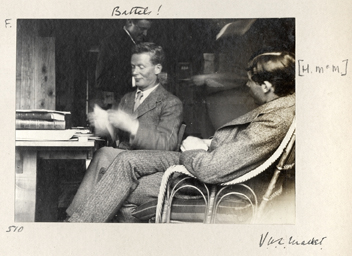
FFU with Harold Macmillan, at the Chalet, July 1913 (FFU 6.55, 57)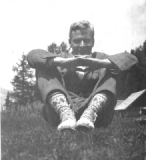
FFU 8.29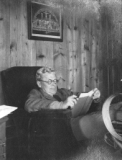
FFU 9.29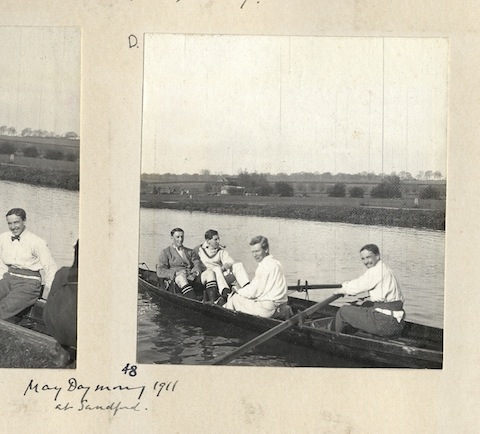
FFU 6.5, May Day 1911
FFU6.7, spring 1911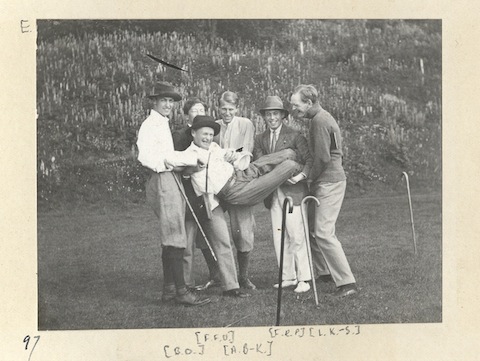
FFU6.10, July 1911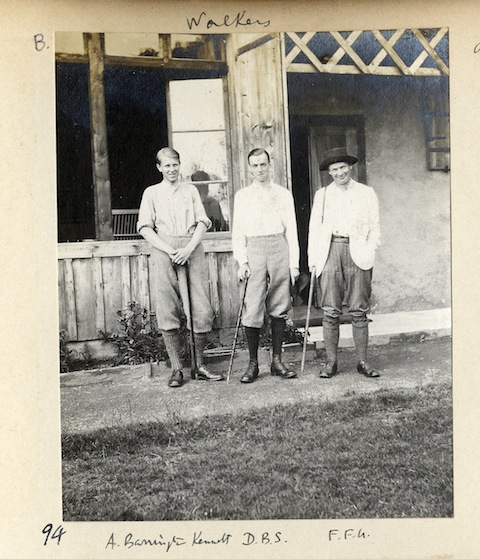
FFU6.10, 1911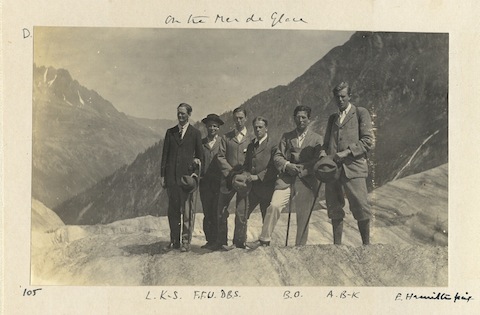
FFU 6.11, 1911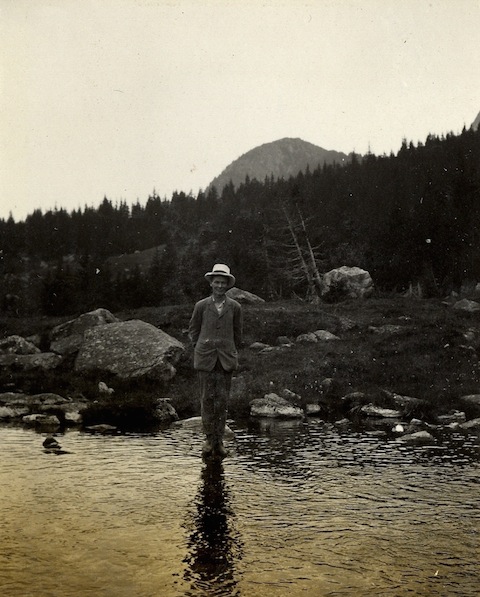
FFU 6.39, 1912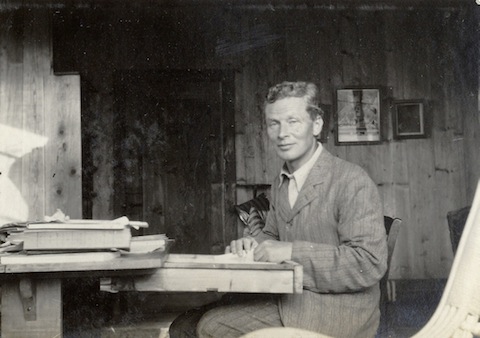
FFU 6.40, 1912
FFU 6.44, Studland, Sept 1912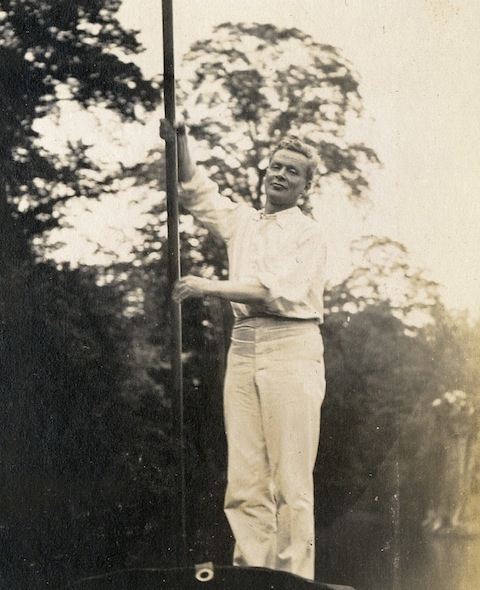
FFU 6.53, summer 1913
FFU 6.54, 1913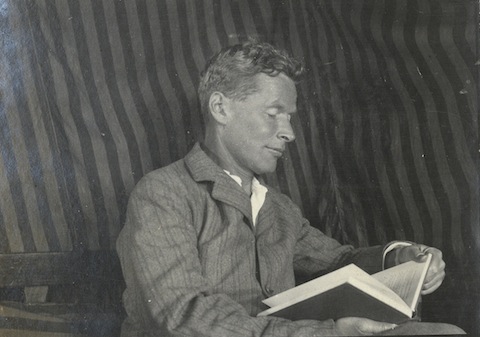
FFU 6.56, 1913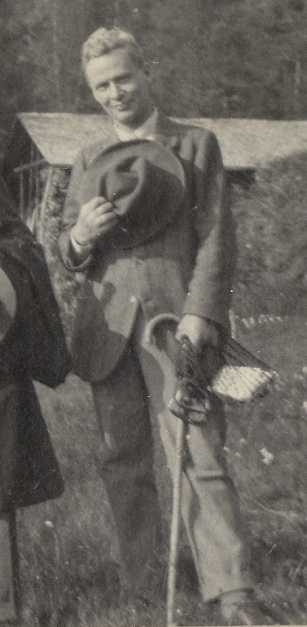
FFU 6.57, 1913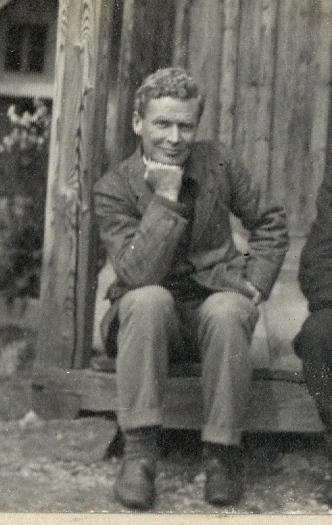
FFU 6.59, 1913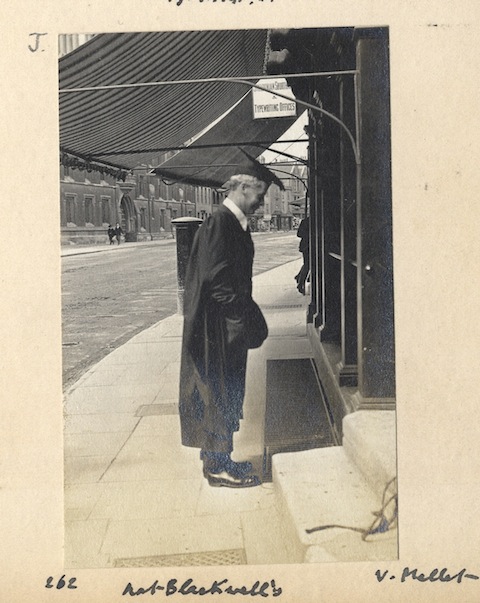
FFU 7.28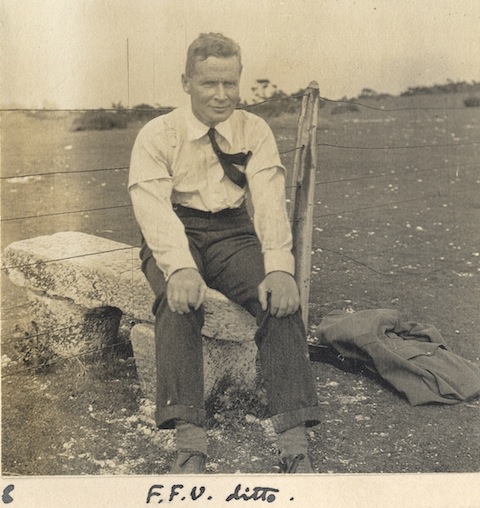
FFU 7.32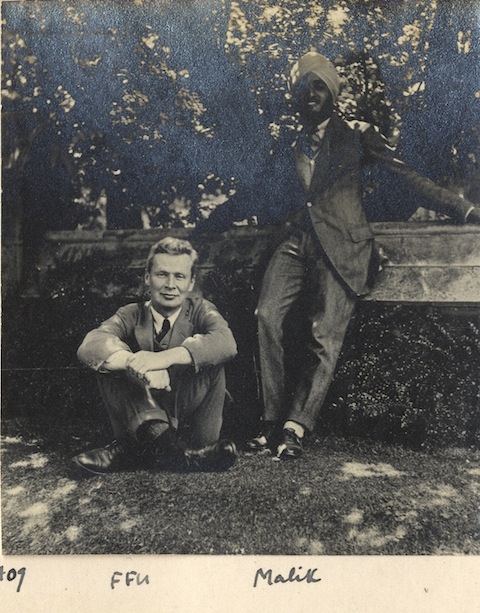
FFU 7.44
FFU 7.44
FFU 7.48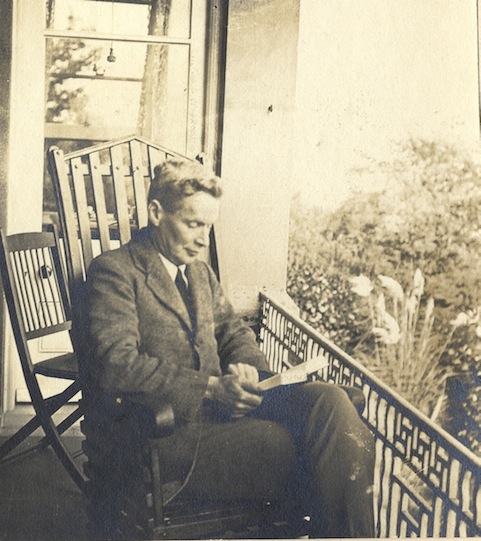
FFU 7.48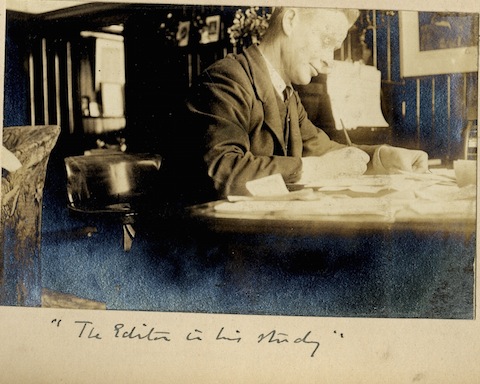
FFU 7.49
FFU7.51
FFU7.52
FFU 7.54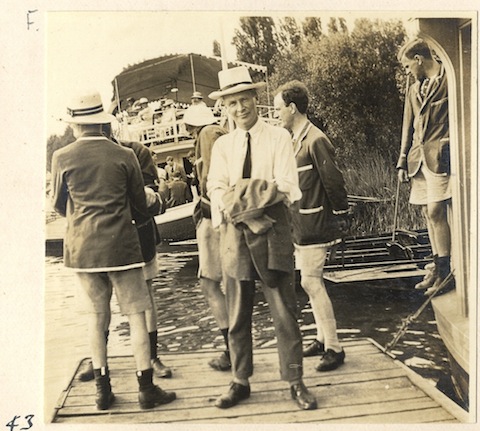
FFU 8.6
FFU 8.17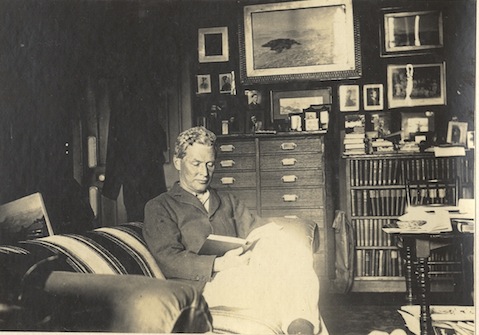
FFU 8.24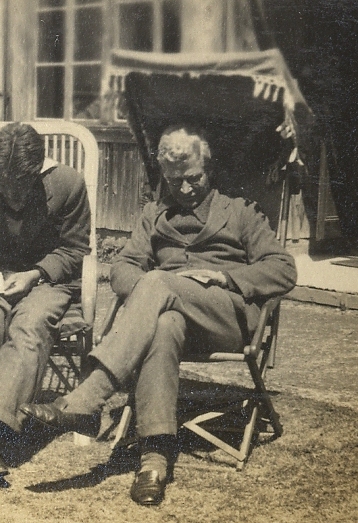
FFU 8.52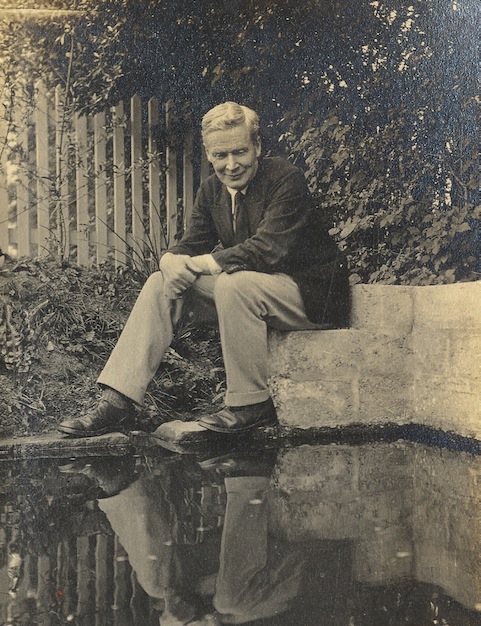
FFU 8.66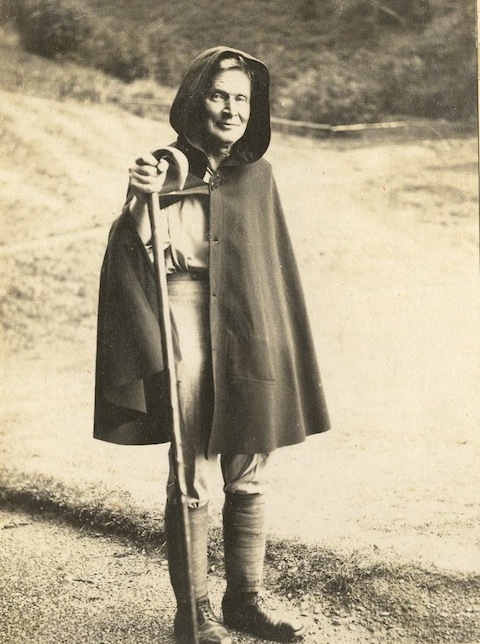
FFU 11.8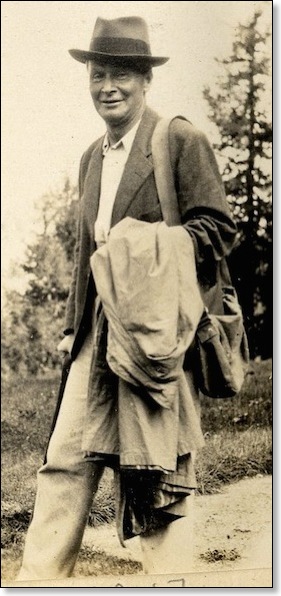
FFU 11.8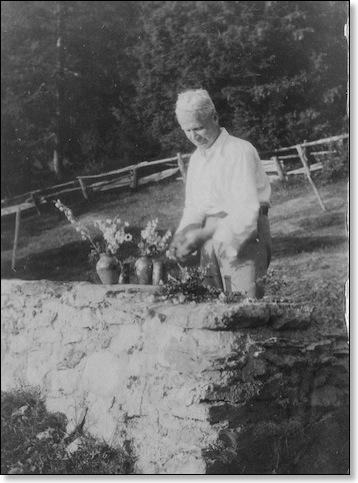
FFU 11.28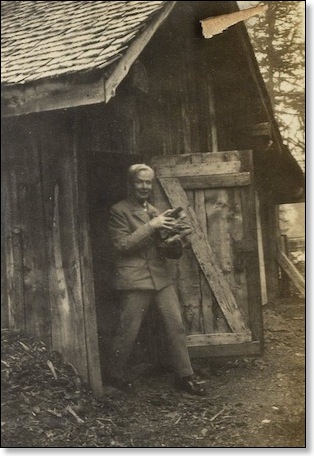
FFU 11.53

Florence Fortescue

Very rare original acrylic on canvas painting by English artist Janet Butler (1961-date) entitled humorously 'Blue Moon'. The painting is signed in the lower right corner 'Florence 2002' and was painted under the artists pseudonym 'Florence Fortescue'.
Painting depicts female rear in impressionist style in vivid blue on blue tones.
Canvas size 20" wide x 16" high.
To date works by this artist have not been available for sale to the general public, however we have been able to acquire several pieces by this talented contemporary artist, please watch for our other upcoming sales of both rare and emerging art.
This painting has not to date been reproduced commercially and copyrights are still held by the artist. This option may be available to the winning bidder upon further negotiations.
Please note that actual colours on this painting may not be exactly as shown in the digital images that you see on your computer monitor, however we do endeavour to represent our items as accurately as possible. For further information please email the seller.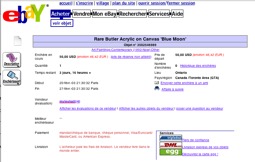

Football League Fortescue (Sport)
WESTERN AUSTRALIA
Westar Rules
Westar
East Fremantle
West Perth
East Perth
Subiaco
Claremont
South Fremantle
Swan Districts
Perth
Peel Thunder
Fortescue National Football League
Tigers
Townsite Eagles
Panthers
Saints

Fingers Fortescue Tennis (Sport)
Posted: Tuesday July 06, 1999 10:48 AM
Sports Illustrated's Jon Wertheim takes a weekly look at who's hot and who's not in the tennis world.
AD IN
Pete Sampras: Consider: But for a shaky match against Richard Krajicek three years ago, best player in his generation could have won SEVEN straight Wimbledons.
Lindsay Davenport: 15-1 underdog at the start of the tournament fails to drop a set in two weeks. New No. 1 (and, for good measure, Wimbledon doubles champ), now embarks on hard-court circuit, her favorite stretch of the year.
Steffi Graf: If this was indeed her last Wimbledon, there's no shame in getting to the finals at age 30.
Leander Paes and Mahesh Bhupathi: Add Wimbledon doubles title to go with the French Open crown they won last month.
Alexandra Stevenson: Handles bizarre week with poise and aplomb uncommon for an adult, much less for an 18-year-old.Pat Rafter: The game's most picturesque serve-and-volleyer conspicuously improves play on grass and reaches semifinals.
AD OUT
Tennis fans: Boris Becker's exit, that we were prepared for. But Graf's retirement announcement, if vague, put a damper on what was otherwise an unsurpassing day for tennis.
Boris Becker: Pixie dust wears off in hard-on-the-eyes fourth-round rout by Rafter.
Samantha Stevenson: Strange that a mother who's never been shy about chronicling her daughter's career (starting at age four), suddenly turns into a "no comment" machine when peppered with tough questions.
John McEnroe: Doesn't get to live out middle-aged fantasy and win another Wimbledon title. Despite Mac's beseeching, mixed-doubles partner Graf withdraws the team after a thoroughly entertaining first few matches.
Mark Philippoussis/Australia's Davis Cup aspirations: Up a set to Sampras, game's most penetrating server suffers a knee injury and may be out for months.
Say, didn't you used to be Fingers Fortescu?
Click here to send a question or comment to Jon Wertheim's Tennis Mailbag.
...("Stuffy") $4,000 Who is Fingers Fortescu? ...

Freddie Fortesque (Theatre)
About the Cast
Frank Robinson, Jr. ( Noel Coward / Arthur ) Washington, DC: Freddie Fortesque Farmer/Lord Henry/Kathleen Willy-Nilly, "The Very Model of a Major Merry Music Hall", Interact; Uncle Pumplechook, "Great Expectations: the Musical", Interact; George, "Sherlock Holmes and the Purloined Patience", Interact; Captain Claret, "White Jacket: the Musical", The Navy Museum; Abbot, "On Sitting On", The Source Theatre Festival; Radon, "Jeff and the Intruders", The National Children's Theatre for the Environment. Regional: Friar Lawrence, "Romeo and Juliet", The Maryland Shakespeare Festival; Bob Crachit, "A Christmas Carol", The Nebraska Theatre Caravan; Noah Curry, "110 In the Shade", The Nebraska Theatre Caravan; Fabian, "Twelfth Night", The Maryland Shakespeare Festival; Angelo, "The Comedy of Errors", The Maryland Shakespeare Festival; St. George, "The Reluctant Dragon", Birmingham Children's Theatre; The Imperial Physician, "The Nightingale", Birmingham Children's Theatre; The White Rabbit, "Alice: A Curious Adventure", The Nebraska Theatre Caravan. Motion Pictures: Airman Land, "Invader", The Very Big Motion Picture Corporation.


